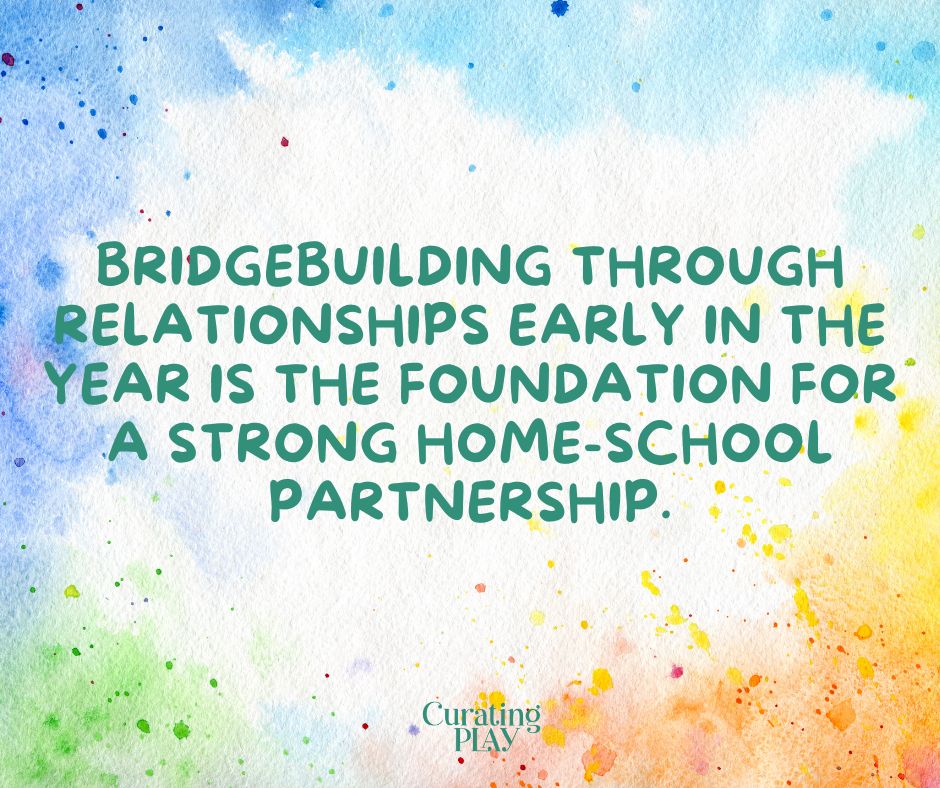Over 12.5 million young children (1) are going “back to school”—whether to a campus, a childcare center, a part-day program or a family childcare setting—and another 4+ million will be heading to kindergarten (2). The importance of connecting those two environments is key to the child’s positive holistic development. (And if your child is not leaving home at all, these ideas will be useful and fun for you as well!)
Children are quick to sense tension or discrepancies in relationships and, while they may not talk about it, that kind of emotional climate can definitely impact the way they perceive and feel about their daily setting. The attitude of parents at drop-off is the first step in creating a strong home-school connection. Parents who have trust and confidence in the place where their child spends the day communicate that comfort to their child. Does this mean that you will never see children cry on those first few days? No, but the parent’s ability to ensure their child that the setting is safe and that they will return helps to ease the transition. Teachers who have an engaging invitation waiting for children as they enter the door assist in this process as well…and playful experiences are just the ticket for that!
Play supports a child’s cognitive, social and emotional growth. Addressing that first challenge in a playful and interactive way sets the child up for a successful first few days in his care/education setting. In addition, it supports the emotions of parents as well.

Strengthening the bond as the year goes on can happen with intentional communication and purposeful planning by the classroom, school or center. Activities can be done at home with clear instructions and materials provided or events can be held at the school/center for all families to attend and enjoy. A variety of benefits come from this home/school collaboration. Strengthened staff and parent communication, increased parent involvement and enhanced play opportunities for children are results of home and school working together.
So, how does that happen? Providing items such as playful learning kits that reflect the concepts being learned at school can go home with children to allow families to participate in the learning process. These might be a book/story extension, math manipulatives such as Unifix cubes or a simple game such as rhyming objects. A school event could be a game night where families have the opportunity to play several kinds of games together and take one home at the end of the event. Suggestions can be sent home for family activities such as a nature walk to gather items and create a collage. Any of the ideas can be attached to classroom ideas and studies to inform families and enrich learning.
Play opportunities are a fun and successful way to strengthen and support home-school connections, build skills and advocacy for families and provide experiences that build children’s skills and abilities. Taking the time and effort to add partnership potential into your classroom, school or center can create growth for everyone!
Resources:
(1) https://www.childcareaware.org/our-issues/research/the-us-and-the-high-price-of-child-care-2019/
(2) statista.com/topics/1734/kindergarten-and-child-care/#topicOverview





